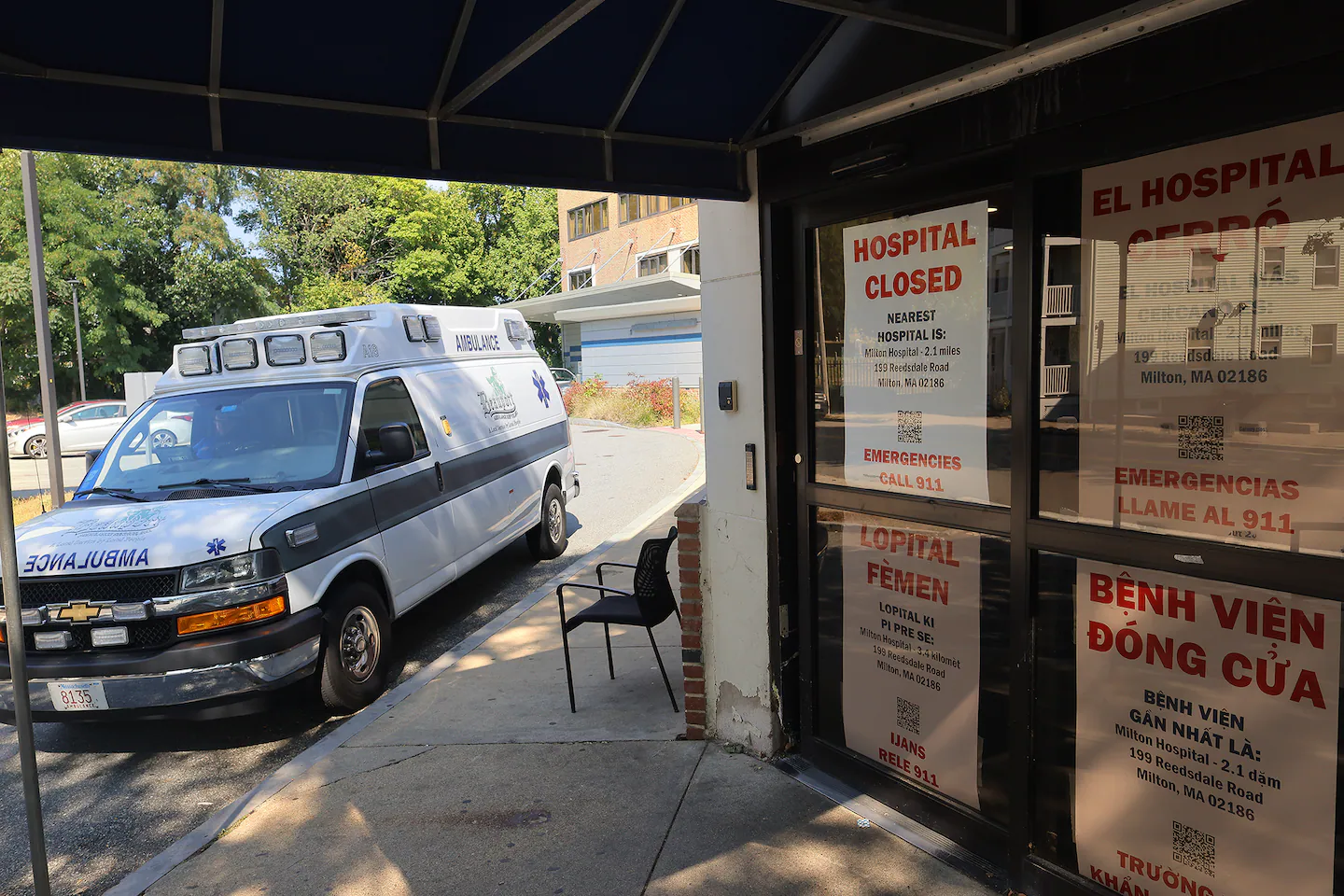
Total margins also fell to 0.6 percent, down from 2.2 percent in 2023. Only 39 percent of acute hospitals ended the year in the black, adding to the concerns over the sustainability of some hospital operations across the state.
The situation flared on Beacon Hill when lawmakers last week rushed a $234 million hospital and community health center aid package to Gov. Maura Healey just ahead of the end of the hospital fiscal year. It is the second infusion of state funds into the health care system in just over a year — following a $417 million aid package in 2024 focused primarily on hospitals formerly operated by the now-defunct Steward Health Care.
CHIA’s latest report highlights a stark divide among hospitals.
At the bottom of the financial spectrum was Steward’s Carney Hospital in Dorchester, which reported $23.7 million in losses — a -39.9 percent operating margin, the lowest in the state. Steward shuttered Carney and Nashoba Valley Medical Center last fall as its bankruptcy case unfolded. Other former Steward hospitals, which were bought by new operators, also posted deep deficits, including:
Saint Elizabeth’s Medical Center: -$68.4M
Holy Family Hospital: -$44.1M
Good Samaritan Medical Center: -$29.5M
Saint Anne’s Hospital: -$5.3M
These figures reflect not only the ongoing aftershocks of the Steward Health Care collapse, but also the inability of other facilities to maintain positive operating performance.
Even beyond Steward, major losses were recorded at:
Anna Jaques Hospital: -$30.7M
MetroWest Medical Center: -$22.4M
Lowell General Hospital: -$22.5M
Melrose-Wakefield Healthcare: -$15.5M
Baystate Franklin Medical Center: -$15.1M
Meanwhile, a handful of hospitals managed to post healthy margins, such as:
Massachusetts General Hospital: $528.6M
Brigham and Women’s Hospital: $400.9M
Lahey Hospital & Medical Center: $147.2M
Berkshire Medical Center: $143.7M (9.6 percent operating margin, highest in the state)
These more stable institutions often benefit from higher private-payer mixes, better reimbursement rates, and stronger capital positions, while struggling hospitals frequently serve higher shares of Medicaid or uninsured patients.
The aid bill Healey signed this week sets aside $122 million in targeted hospital relief, prioritizing facilities with negative margins, low “relative prices,” and large Medicaid patient loads. It also allocates $77 million to the Health Safety Net Trust Fund, which helps cover the cost of care for uninsured and underinsured patients.
Lawmakers characterized the aid as essential to stave off defaults and keep doors open.
“Many of our hospitals are at — very close to… defaulting on their bond covenants, and they need this cash infused now,” Senate Ways and Means Chair Michael Rodrigues said during last week’s debate on the bill.
The 2024 unraveling of Steward Health Care, the state’s largest for-profit hospital system, led to layoffs, closures and hundreds of millions in emergency state spending commitments. But CHIA’s data makes clear that financial distress is not limited to Steward legacy sites.
“This year’s report shows continued volatility in the system, albeit widely varied across hospitals,” said CHIA Executive Director Lauren Peters.
At the system level, 17 of 23 hospital health systems posted positive total margins, buoyed largely by non-operating gains, including $2.6 billion in unrealized investment income. However, only six systems reported positive operating margins.
Aggregate operating revenues for acute hospitals rose $2.8 billion (6.5 percent) over the previous year. However, expenses rose by $2.9 billion (6.8 percent) — continuing a pattern of costs outpacing revenues. Revenue growth for hospital fiscal year 2024 was significantly lower than the year prior, when aggregate operating revenues across all hospitals increased by $3.6 billion.
Temporary labor costs dropped sharply by $500 million (37 percent), though workforce spending overall at acute hospitals increased by $500 million. The spending, representing salary, benefits and temporary labor, makes up 41.5 percent of the total expenses in hospital fiscal year 2024.
In April, then-Secretary of Health and Human Services Kate Walsh warned that hospital closures, like that of Carney and Nashoba Valley, could happen again.
“I think we all have to think differently about what hospitals are and what they’ll be in the future… I love hospitals. I hate to see them close. The sad fact is, across our country, there are 1,300 critical access hospitals — there’s one in Massachusetts, in Athol — and a third of those hospitals were projected to close. The small community hospital is, it’s just really threatened,” she said.
Talking with lawmakers about providing health care access in Dorchester after Carney’s closure, Walsh added, “This is not the last conversation like this we’ll have in the next couple of years.”
Other officials have also recently expressed concern about hospital finances, pointing to unsustainable cost inflation and federal health care funding cuts.
Senate Minority Leader Bruce Tarr last week called the state’s repeated inability to contain costs a “vexing problem,” while many others are pointing to cuts authorized under the Trump-backed One Big Beautiful Bill that they say will create coverage and health care system funding nightmares.
“With more than half of all hospitals operating in the red and three quarters of hospital health systems reporting losses, the cost pressures that local providers were facing in FY24 took an undeniable toll,” said Daniel McHale, senior vice president for health care finance and policy at the Massachusetts Health & Hospital Association.
He called the newly approved state aid “critical for patient care” and said the “basic stability of our system should remain front-and-center in every healthcare policy conversation.”



